Python list comprehensions are for loops executed in a list to generate a new list.The reason python list comprehensions are evaluated backward from or right to left is because usually anything inside a bracket( [], {}, () ) in python is executed from right to left with just a few exeptions .Another thing to note is that a string is an iterable (lists,tuples, sets, dictionaries, numpy arrays) concatenating characters so it can be iterated over like a list.
List Comprhension form:
new_list = [item for item in my_list]
This will have the same effect:
for item in my_list:
my_list.append(item)
Since a strings is an iterable of characters you can do this:
my_list = [character for character in 'Hello world!']
print(list)
Output:
['h', 'e', 'l', 'l', 'o', ' ', 'w', 'o', 'r', 'l', 'd']
Your list comprehension can also be written as:
my_list = []
for character in 'Hello world':
my_list.append(character)
print(my_list)
I am also pointing out that you shouldn't use built in methods(such as List) as variable names because when you do you overide them which will bar you from using that method in the future.
Here is a complete list of all builins as of python 3.9.6:

